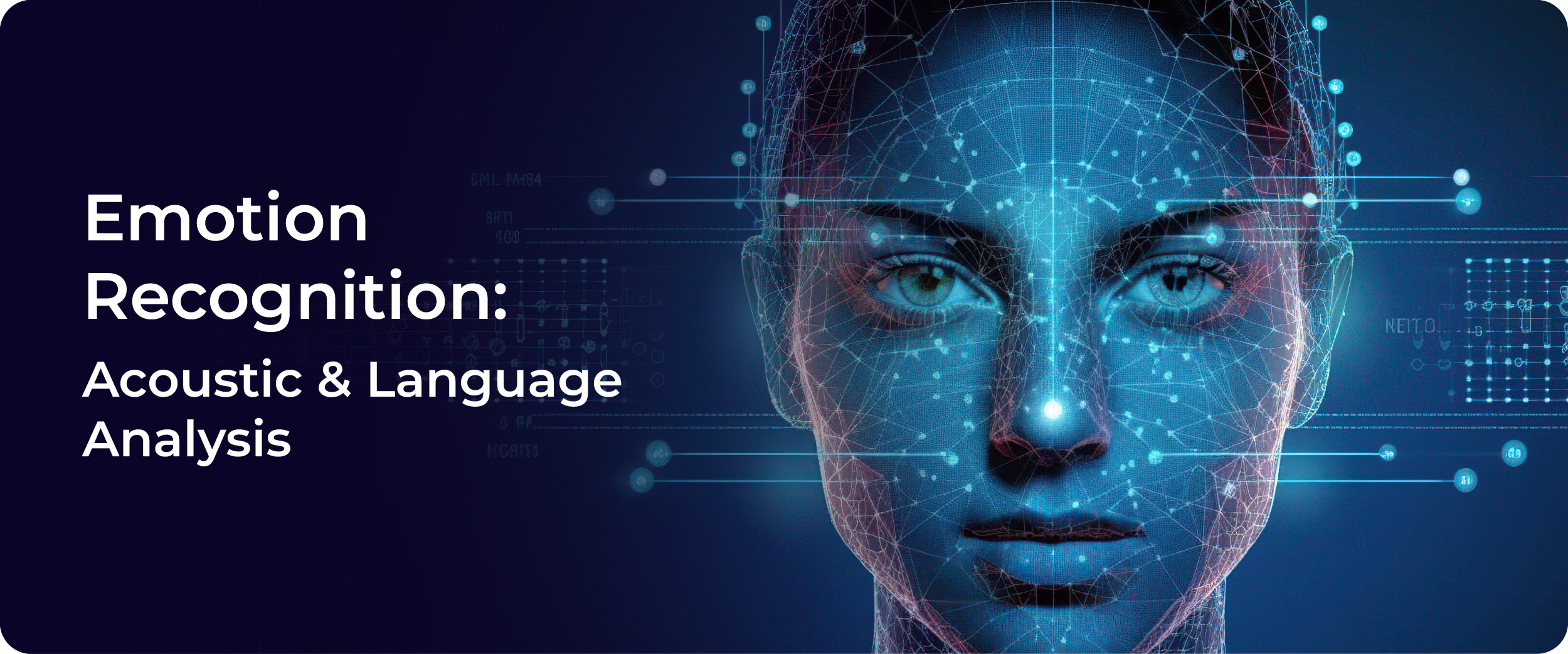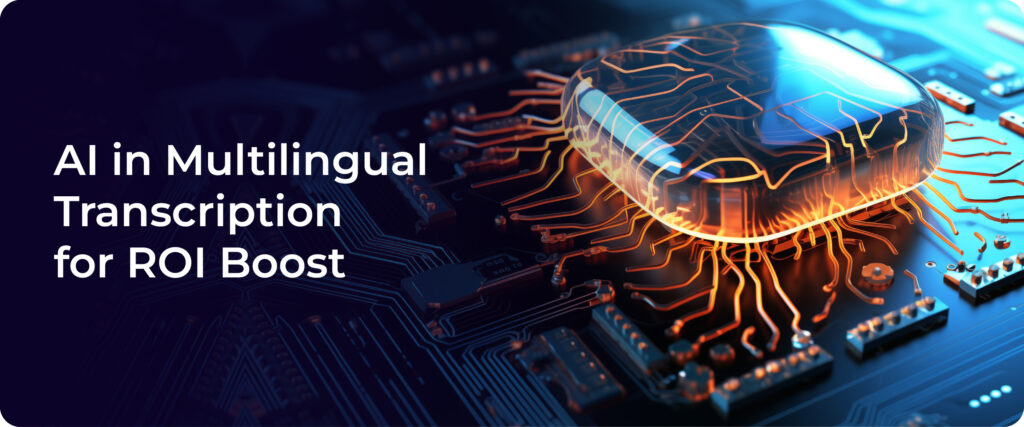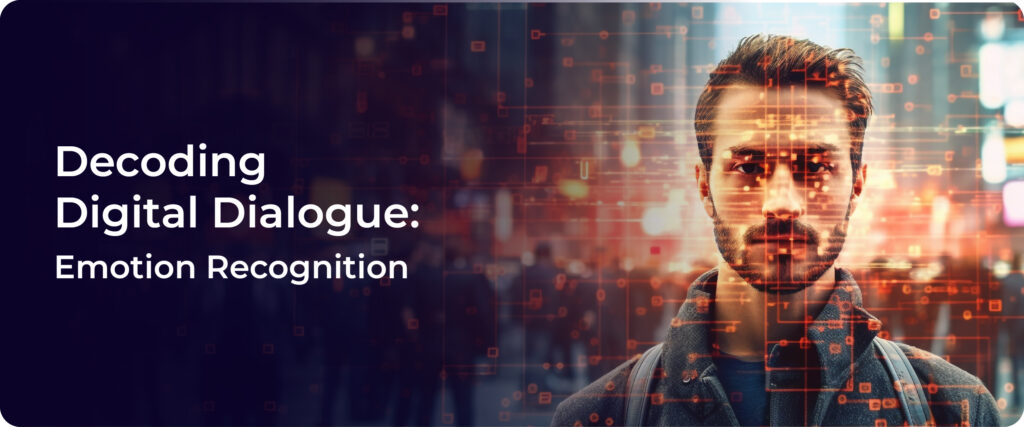
Human communication is a complex web of emotions, with verbal and non-verbal cues playing pivotal roles in conveying feelings. To truly understand and respond effectively in conversations, grasping the emotional nuances of what is being said is imperative. Consequently, developing AI systems that understand and recognize human emotions is important.
The task of multimodal emotion recognition addresses the problem of monitoring the emotions expressed (via various modalities, e.g., video (face), audio (speech), and language cues) by individuals in different settings. By integrating data from multiple modalities, machines can achieve a more profound comprehension of human emotional states.
What is Multimodal Emotion Recognition?
Multimodal Emotion Recognition can be defined as the use of technology to simultaneously analyze the acoustic properties of speech, such as tone and pitch, and the content of the language, including text and sentiment, facial cues including expressions, eye movements, etc., to detect and interpret the emotions expressed during a conversation.
In essence, it combines the auditory, semantic, and visual aspects of communication to provide a more holistic understanding of the emotional content of a dialogue. In convozen.AI, we focus on acoustic properties and language understanding to develop our emotion recognition systems.
How does it work?
On a high level, multimodal emotion recognition relies on a blend of techniques and methodologies:
1. Speech Analysis: This involves the use of audio processing techniques to extract features like pitch, tone, and speaking rate. Machine learning/ Deep Learning algorithms are then applied to this data to classify emotions based on acoustic cues.
2. Natural Language Processing (NLP): On the textual front, NLP algorithms analyze the words, sentence structure, and sentiment in the language used during conversations.
3. Fusion of different Features: These individual models need to be trained and analyzed to see how each modality independently could be used to solve the emotion recognition task. Once the individual models are trained and tested, we fuse the insights from different modalities and build a classifier that categorizes the emotion into different categories based on the use case such as: happy, sad, angry, etc.
There are multi-optimization algorithms to perform fusion operations at the decision level. The final decision is obtained by the linear weighted sum of all single-modal classification results. In this way, different modalities can be identified cooperatively, so as to give full play to their respective advantages.

Real-World Applications
The applications of Multimodal Emotion Recognition are wide-ranging and impactful:
1. Customer Support: In call centres, understanding the emotions of customers can be vital. Multimodal Emotion Recognition can improve sentiment analysis, allowing companies to respond more effectively to customer needs and concerns.
2. Build Better Chatbots: By better understanding the user’s emotions, chatbots can provide more empathetic responses, making interactions feel more human and natural.
3. Mental Health Support: In the context of mental health, this technology can aid in identifying emotional distress in conversations and triggering timely interventions or support.
4. Education: Emotion recognition can play a significant role in the education sector, helping educators gauge the emotional state of students and adapt teaching methods accordingly.
5. Entertainment: Content recommendation platforms can use emotion recognition to suggest movies, music, or books that align with the user’s emotional state, enhancing user experience.
Benefits and Insights
- Comprehensive Understanding: It offers a more complete picture of emotions, taking into account both what is said and how it is said.
- Customer Satisfaction: In customer service, happier customers lead to increased satisfaction and loyalty.
- Enhanced Mental Health Support: Early detection of emotional distress can lead to timely intervention and improved mental health outcomes.
- Personalized Learning: In education, tailored approaches to teaching can lead to better student engagement and performance.
- Targeted Content Recommendations: In entertainment, recommending content based on emotional states can create more engaging user experiences.
Challenges and Considerations
While Multimodal Emotion Recognition is a promising technology, there are challenges and considerations to be mindful of:
- Data Integration: Integrating and synchronizing acoustic and language data can be complex and require extensive preprocessing.
- Privacy Concerns: The technology must address privacy issues related to recording and analyzing conversations. Ensuring data security and obtaining proper consent from individuals are critical aspects.
- Emotion Variability: Emotions are complex and can vary greatly between individuals and cultures. Building a robust system that can handle this variability is a significant challenge.
- Interpreting Context: Understanding the context in which emotions are expressed is crucial for accurate recognition. Misinterpreting the context can lead to inaccurate results.
Implementing Multimodal Emotion Recognition
Organizations looking to implement Multimodal Emotion Recognition should follow these steps:
1. Collect and Prepare Data: Gather a dataset of conversations with labeled emotional states. This dataset is crucial for training and testing the system. If video data is present, then it is a more convenient approach.
Because the two modalities of facial expression and voice can be directly extracted in the video, they have the advantages of convenient data collection, obvious features, and high precision. However, we rely on speech and text cues for our emotion recognition models.
2. Choose Appropriate Models: Select suitable machine learning/deep learning models. Depending on your specific use case, different models may be more effective. effective feature representation is very critical for emotion recognition.
The main purpose of the models is to automatically obtain effective feature representations from data. Through multiple feature transformations, the original data features can be transformed into effective feature representations. Finally, we can input into the classification model to get the recognition result.
3. Evaluate and Fine-Tune: Continuously evaluate and fine-tune the system to improve accuracy and adapt to the specific dataset and use case. Emotion recognition is an evolving field, and staying up-to-date with the latest techniques is essential.
4. Ensure Ethical Use: Implement robust ethical guidelines to ensure the technology is used responsibly and respects individuals’ privacy.
Related Work
Some of the initial approaches in the area of multimodal emotion recognition include the fusion of acoustic information with visual cues for emotion recognition. In the past decade, the growth of deep learning has motivated a wide range of approaches in multimodal settings. Here are a few notable approaches:
- B2+B4 Model (Kumar and Vepa, 2020): This model uses a conditional gating mechanism to learn cross-modal information, combining acoustic and visual cues for improved emotion recognition.
- bc-LSTM: This proposes an LSTM-based model that captures contextual information from the surrounding utterances, enhancing the understanding of emotions in conversations.
- Multilogue-Net: This solution is based on a context-aware RNN and uses pairwise attention as a fusion mechanism for all three modalities (audio, video, and text), resulting in a more comprehensive emotion recognition system.
Conclusion
Multimodal Emotion Recognition in Conversation is a groundbreaking technology that offers a holistic view of human emotions during dialogues. By combining different modalities, it helps us gain a deeper understanding of emotions, ultimately leading to more effective communication, enhanced customer satisfaction, and improved mental health support.
I encourage readers to explore Multimodal Emotion Recognition solutions, stay updated on the latest research in the field, and consider implementing this technology in their communication-related projects to harness the benefits it offers. As this technology continues to evolve, it holds the potential to revolutionize the way we connect with and support one another in various aspects of our lives.
Resources
For further reading and research in Multimodal Emotion Recognition, you can explore the following resources:
https://arxiv.org/pdf/2205.02455v1.pdf
https://paperswithcode.com/paper/combining-deep-and-unsupervised-features-for
https://www.hindawi.com/journals/wcmc/2021/6971100/
Unleash Your Contact Center’s Potential Today! 👉 Get Started with ConvoZen.AI and Elevate Customer Experience.


